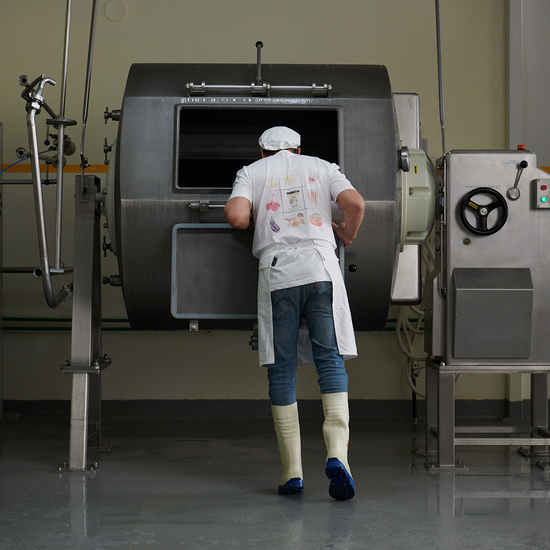
Batch Churned
The difference in our butter is the process we go through to make it. The butter is beurre de baratte (butter of the churn)- it is batch churned from single origin cream, creating a natural and less processed product.
When the cream arrives from the farms to the creamery in Caringbah we heat up the cream and inoculate it with a lactobacillus culture. We then let the cream culture, allowing for a full buttery taste and slight tang to develop, creating the unique flavour of the cultured butter- this is our crème fraiche. The crème fraiche is then churned, which produces our buttermilk and of course the butter. Finally, the butter is kneaded and placed into hand pressed molds, wrapped and labelled.
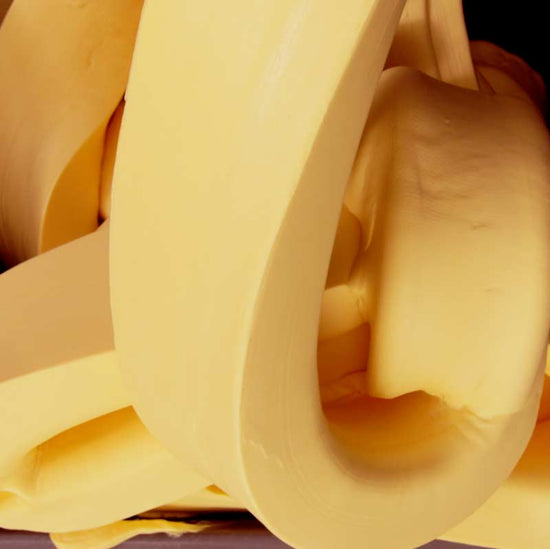
Cultures
The cream is pasteurised before the culture is added. This means that when the culture is later added to the cream and it is them fermented, the cultures are still alive and active after churning- so your wheel of Pepe Saya Butter is alive and full of culture.
Button label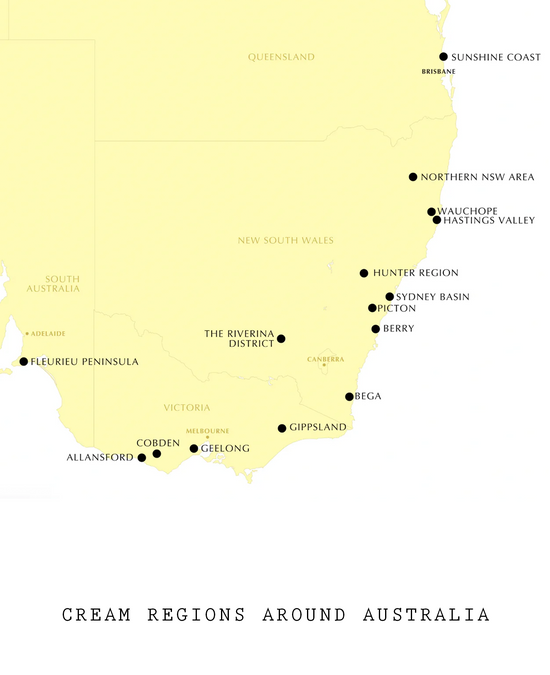
Provenance
Our focus has always been on provenance and transparency. We source some of the best Australian cream and are passionate about building direct relationships with our farmers.
The cream regions we source from change seasonally, with six main farms in NSW, VIC and SA in Australia. The map below shows where we have sourced from since 2010.
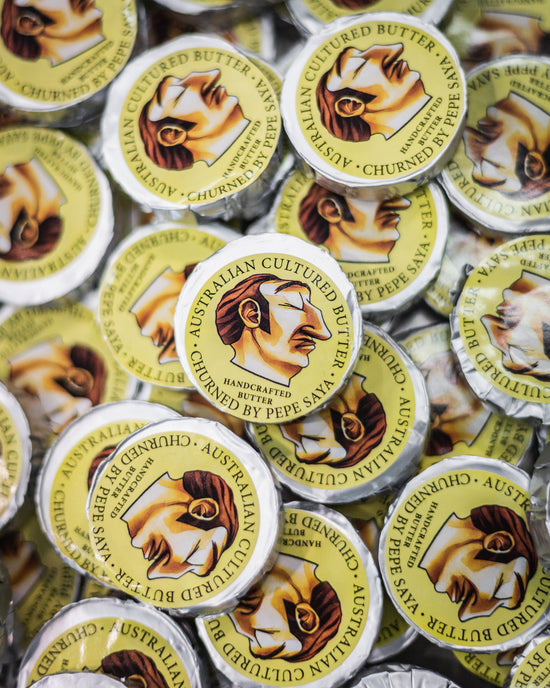
Tasting Notes
When you first open your butter it will have a tangy and creamy flavour. Over time the culture will develop, which enhances the flavour. Developing cultures will give the butter a cheesier taste and more pungent smell. This is a typical characteristic of cultured butter.
The cream used to make butter affects aroma. Pepe Saya source their cream from six main dairies, so each batch of butter will be different in flavour and texture according to the cream. Cultured butter (Pepe Saya) scores high in the olfactory test, the butter has a very creamy and cheesy aroma.
Cultured butter with bacteria added to it will produce a more desirable and complex aroma, compared to butter made with traditional cream will give a flatter aroma. The season, manufacturing processes and storage condition also influence the aroma. In the summer milk fat contains more liquid (soft fat) therefore butter tends to be weaker and leaky.
In the winter the milk fat contains more solid fat and tends to be harder, brittle and ultimately less spreadable.
Button label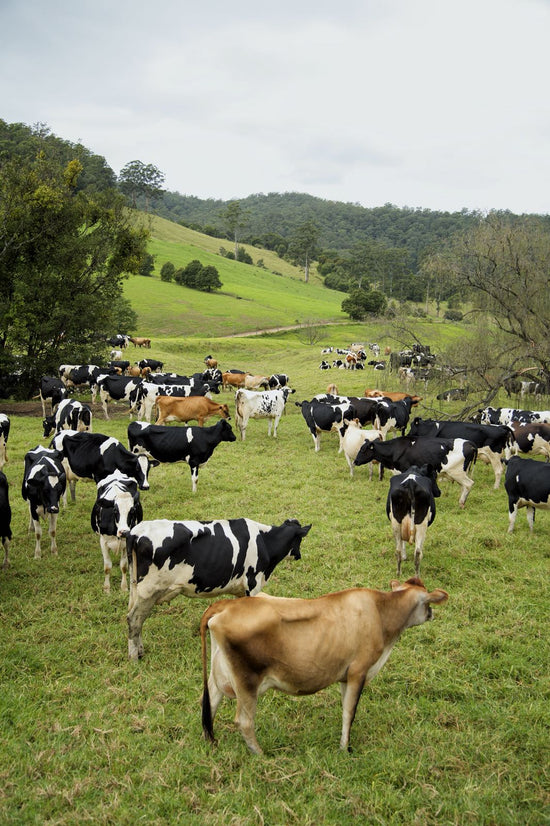
Spring Flush
'The hills are alive with the sound of music’ is what comes to mind when someone says ‘spring flush’ to me. I think green fields, rolling hills, blooming flowers, bees, birds and butterflies. Flowing rivers and creeks, with the occasional sun-shower and rainbow.
For our dairy farmers, spring flush comes as the days get longer and the air gets warmer, producing more feed for the cows, and in turn more milk and a higher fat content.
The management of their pastures in winter is crucial to a good season. Early spring the grass is similar to grain, the NDF (Neutral Detergent Fibre) is low so they can eat a lot. By mid-spring the pasture becomes more fibrous like hay, so they can’t fit in as much and the fat content of the milk goes up.
You will find variations in cream by season and region. After many years of churning, the team and I can tell where the cream is from that we are churning just from the look and smell.
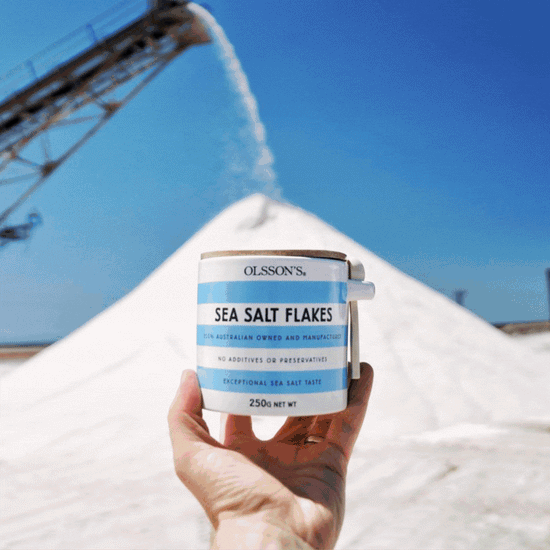
Olsson's Salt
Our salted butter is made with Olsson's salt - every wheel has been since day one.
We use a mix of their sea salt flakes and dairy salt (a very finely ground, pure salt).
The Olsson Family have been making solar sea salt since the 1948 and is the oldest family owned and operated sea salt maker in Australia.
To make it's sea salt, Olsson's use the method called "solar evaporation". Solar salt is produced by the action of sun and wind on seawater in large ponds. The seawater evaporates in successive ponds until the seawater is fully concentrated and the salt then crystallizes on the floor of the pond. It is then scooped up, washed in seawater, dried and packaged.
That's it.
There are no chemical processes involved in the manufacture of our product, which is why we guarantee it is perfectly natural.
Solar salt plants must be located in area of low rainfall and high evaporation rates and Olsson's have the unique advantage of having as its only ingredient seawater from two of the world's most pristine oceans: The Great Barrier Reef (Port Alma, QLD) and The Great Australian Bight (Whyalla, SA). Pristine Australian water, sun and wind work in harmony to create the gorgeous Australian sea salt taste we all love.

